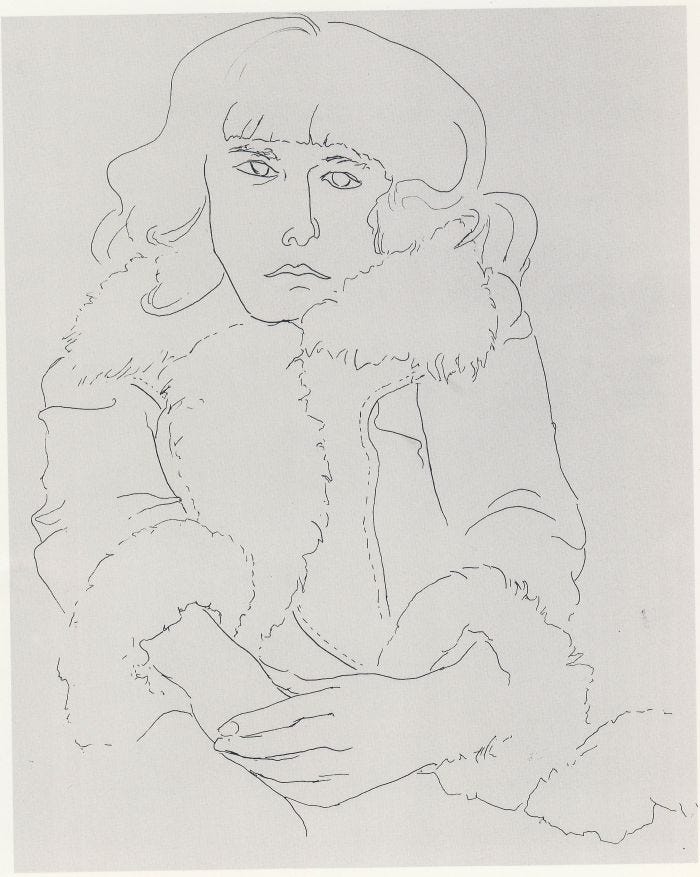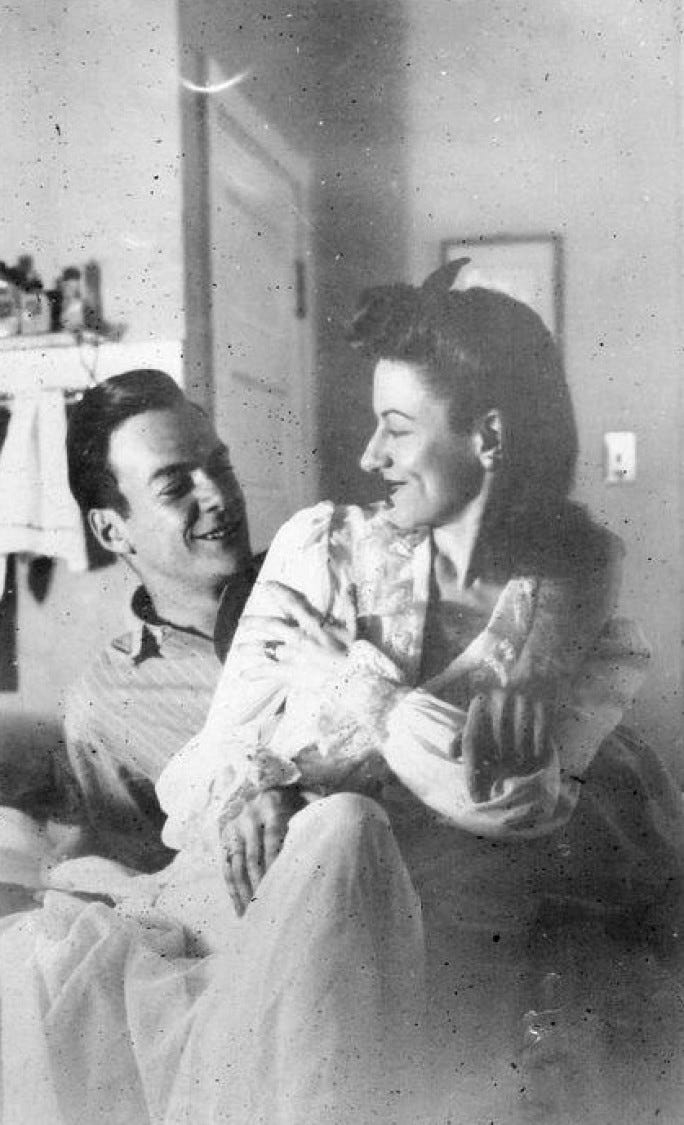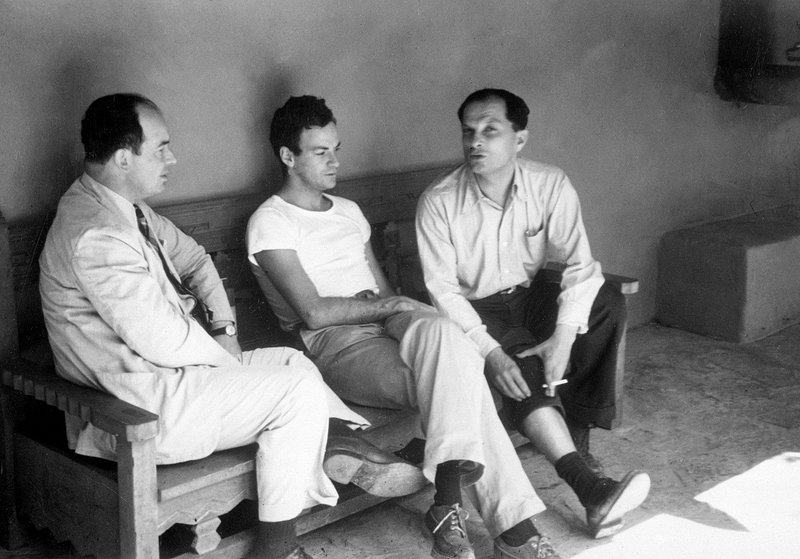Richard Feynman: The Genius Who Found Joy in Discovery
Written on
Chapter 1: A Chance Encounter with Feynman
A decade ago, I had the unexpected pleasure of encountering Richard Feynman during a leisurely visit to a library. My intention was simply to enjoy the soothing sound of rain through the window. This library provided a serene backdrop for my thoughts, and as the rain began to ease, my gaze fell upon a book I had chosen solely for its captivating cover and title. Flipping through its pages, I stumbled upon a particularly striking line: “I have to understand the world, you see.”
In that moment, a realization hit me, leaving me exhilarated by this remarkable insight. I felt an overwhelming desire to celebrate this discovery with a round of tea for everyone in the library, eager to discuss the book and its brilliant author, Richard Feynman.

Chapter 2: Embracing Life Through Curiosity
Regrettably, my introduction to Richard Feynman came later than I would have preferred; he had been a well-kept secret until that point. Determined to bridge this gap in my knowledge, I immersed myself in his works and watched every documentary and interview available, yearning to see the world through his eyes.
Even now, during moments when my happiness wanes, I revisit Feynman's reflections on life to restore my joy. His unique ability to infuse passion and enthusiasm into even the most mundane aspects of existence continues to inspire me, as emotions have a way of spreading.
Feynman had an extraordinary talent for perceiving the world differently, even regarding the simplest things, such as the myriad flowers lining the road. During a joint interview with a friend, an artist, on the BBC program “Horizon,” he articulated his perspective beautifully:
Feynman recounted: “My artist friend once held up a flower and exclaimed, ‘Isn’t it beautiful?’ I agreed, but he continued, ‘As an artist, I can appreciate its beauty, while you, as a scientist, just dissect it, rendering it dull.’ I found this reasoning quite peculiar. The beauty he perceives is also available to me. I can see the flower's beauty, but I delve deeper, envisioning its cellular structure and the intricate processes within, which possess their own beauty. The evolutionary significance of flower colors to attract pollinators adds layers of intrigue. Science enhances the wonder and mystery of nature rather than diminishing it.”
This heartfelt monologue is what we now refer to as Feynman’s “Ode to the Flower.”
Chapter 3: The Playful Physicist
Feynman was undoubtedly a remarkable individual, transcending the typical boundaries of physicists. He engaged in activities like playing the bongo drums or sketching people in his pocket notebook to clear his mind after grappling with complex topics. The editors at Abackus.com have compiled many of his delightful sketches, which I highly recommend exploring.

His humor and eccentricity were evident in his approach to life. Feynman leveraged his immense intellect for enjoyment rather than solely for academic pursuit. Following the passing of his wife, Arline Greenbaum, he found himself in a state of depression, leading to a pivotal decision to approach physics as a source of entertainment. He expressed this newfound attitude in his book, “Surely You’re Joking, Mr. Feynman!”:
“I decided that since I felt burned out and would never achieve anything significant, I would embrace my position at the university and engage with physics purely for pleasure, much like enjoying the Arabian Nights.”

This turning point allowed him to utilize physics to comprehend the world, simplifying complex concepts so others could grasp them. He famously stated, “When we truly understand something, we can explain it at all levels.”
Feynman nurtured a profound curiosity about everything around him, a trait instilled by his father. During a stroll in the park, his father pointed out a bird and remarked:
“Look at that bird. What species is it? It’s Spencer's warbler. In Italian, it’s Chutto Lapittida. In Portuguese, it’s Bom da Peida. In Chinese, it’s Chung-long-tah, and in Japanese, it’s Katano Tekeda. You can learn the names of this bird in every language, yet you will know absolutely nothing about the bird itself. Let’s observe the bird and see what it does—that is what truly matters.”
Feynman’s quest for understanding was genuine. One day, while enjoying lunch, he observed children tossing a plate and became intrigued by the physics involved. This simple act reignited his interest in quantum mechanics, ultimately earning him a Nobel Prize for his contributions to the field.
He later recounted this experience, noting, “While eating lunch, I saw some children throw a blue medallion onto a plate with the Cornell emblem. The plate wobbled, and I became curious about the dynamics involved. I began to play with the equations of motion related to this rotation, which led me back to quantum electrodynamics.”
Chapter 4: Visionary Insights
Richard Feynman possessed profound insights into life and its intricacies. His forward-thinking ideas during his lecture, “There’s Plenty of Room at the Bottom,” showcased his visionary mindset. He noted the need to miniaturize computers, stating:
“I’m not sure how to accomplish this practically, but machines are currently large, filling entire rooms. Why not create smaller devices using tiny wires? By ‘small,’ I mean at the atomic scale, with circuits mere thousands of angstroms across.”
This foresight about the potential of miniaturization in computing would later become a reality, leading to advancements in technology that transformed the world.
Feynman’s ability to teach was exceptional. He had a unique talent for making complex subjects accessible to all. In his book “Feynman’s Lost Lesson,” he simplifies the complex orbits of planets using Euclidean Geometry, a concept typically introduced in middle school. His ability to explain magnetism and combustion in relatable terms exemplifies his teaching prowess.
For example, he explained the formation of fire by describing atomic interactions in a captivating manner:
“The attraction between atoms varies. For instance, oxygen in the air yearns to bond with carbon. If they draw close enough, they connect, releasing energy and producing heat. When sufficiently agitated, this process leads to combustion—a cascade of reactions that generates heat and sustains itself.”
Feynman’s lectures have been meticulously recorded, ensuring his teachings are accessible to all. The Feynman Lectures on Physics series is a treasure trove for those passionate about physics.

Chapter 5: A Teacher's Legacy
Feynman deeply cared about his students’ learning experiences. During a stint as a guest lecturer in Brazil, he made the effort to learn Portuguese, believing that students benefit most when taught in their native language. His commitment to education was evident, as he sought to address systemic issues within the Brazilian education system.
He observed that while Brazilian students began studying physics at a young age, there were fewer renowned Brazilian physicists. He concluded that the focus was more on memorization than comprehension. Feynman emphasized the importance of engaging with nature rather than merely reciting definitions.
To inspire other educators, he summarized his observations into seven essential principles:
- Don’t just teach students to read.
- Encourage them to question what they study.
- Cultivate doubt and critical thinking.
- Promote understanding through experience.
- Allow them to learn from their mistakes.
- Teach them how to grasp concepts thoroughly.
- Instill the ability to teach others.
Feynman’s keen observational skills and problem-solving abilities often led to ingenious solutions. For instance, he decided to have only chocolate ice cream for dessert, a whimsical yet practical choice.
In 1978, after a fire threatened his home, he ensured it was protected against flooding, a decision that seemed puzzling at the time. However, when heavy rains caused landslides the following year, Feynman’s foresight proved invaluable.
He also shared profound insights with those he met. When Pulitzer Prize-winning author Herman Wouk sought to understand World War II through interviews with Feynman, the physicist advised him to learn calculus, dubbing it “The Language that God Speaks.” This advice led Wouk to enroll in a high school calculus course, ultimately inspiring his book, “The Language God Talks: On Science and Religion.”

Chapter 6: The Heart of Feynman
In conclusion, Richard Feynman was a remarkable figure whose impact transcends his Nobel Prize and academic accolades. His insatiable curiosity, unique perspective on life, and willingness to share knowledge set him apart as an exceptional scientist.
Feynman’s emotional intelligence, coupled with his passion for physics, contributed to his character. His poignant letter to his late wife, Arline Greenbaum, written 16 months after her passing, reflects a depth of feeling comparable to that of renowned poets.
October 17, 1946
D’Arline,
I adore you, sweetheart...
This heartfelt message encapsulated Feynman’s enduring love and profound emotional landscape.
His final piece of advice resonates with all of humanity:
“Fall in love with an activity and pursue it! Life’s mysteries may never be fully unraveled, and that’s perfectly fine. Explore the world; nearly everything is fascinating if you delve deep enough. Dedicate your effort to what you enjoy, and maintain a balance with other responsibilities so society doesn’t hinder your passions.”
Note 1: Subscribe to Beyond Euclid! for weekly high-quality math and science content to brighten your week. Your support is greatly appreciated!
Note 2: I may earn commissions from purchases made through Amazon links in this post.